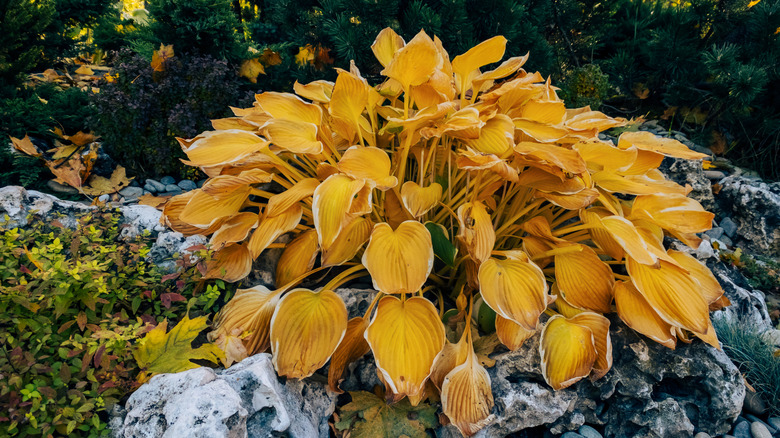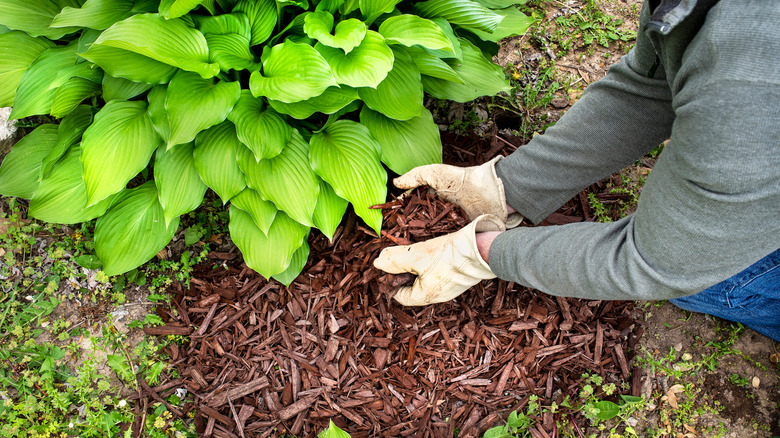Prepare Your Hostas For Winter With One Simple Addition To The Soil
With the rising popularity of naturalistic landscapes, many gardeners are choosing to leave the foliage on perennials to provide visual interest through the winter. Overwintering plant foliage can also provide food and shelter for wildlife and insect populations, while ensuring that the plant itself is protected against cold, harsh winters. However, this trend doesn't work with all landscaping plants, and in USDA Hardiness Zones 3 to 9, plants from the Hosta genus are a major exception. Instead, preparing your hostas for winter means adding mulch to the base of the plant.
Mulch provides numerous benefits that support the growth of plants like hostas. By moderating soil temperatures, suppressing weeds, and keeping soils moist, mulch offers advantages to hostas, which are prone to a variety of problems throughout the year. Whether it's challenges like slugs in the summer or voles in the winter, choosing the right mulch and winter care practices ensures healthier plants.
To successfully care for hosta plants going into winter, start by pruning to get rid of dead foliage after the first frost. Susceptibility to pests and diseases is a primary reason that hostas must be cut back in the fall, and getting rid of the brown, dead foliage ensures that you're not harboring slug eggs through the winter. Then, since the area where your hosta foliage was will look a little bare, you can add a layer of mulch around the base of your plants to tidy up your landscaping.
Learn more about mulching and caring for hostas to keep them healthy all year
Hostas are popular and versatile for shade gardens, and they're easy to grow when given the right conditions. Surprisingly hardy, hostas actually benefit from the cold during their dormancy period, and you should wait until the ground has frozen before applying a few inches of mulch around their base in the fall. Adding a good layer of mulch before winter helps protect hostas from freeze-and-thaw cycles, which can set them back or kill them. Another reason hostas need mulch before winter is that they require moist soil. As mulch keeps the ground from drying out, it can help to regulate soil temperatures and assist your plants in surviving brutally cold winters.
Apart from fall mulching, these striking plants can be mulched a few times a year, although it's important to avoid using too much mulch. Over-mulching is one of the most common mistakes to avoid when growing hostas. It can lead to significant problems, including issues with waterlogged soils and voles. Also, it's best not to bury the crowns because it can trap moisture in the center of the plant and lead to disease problems.
When mulching hosta plants, make sure to weed around them and check to see how much mulch is already there. Then, lay new mulch around the base, spreading enough to go at least up to the drip line or past it, but always staying just a few inches away from the crown.

